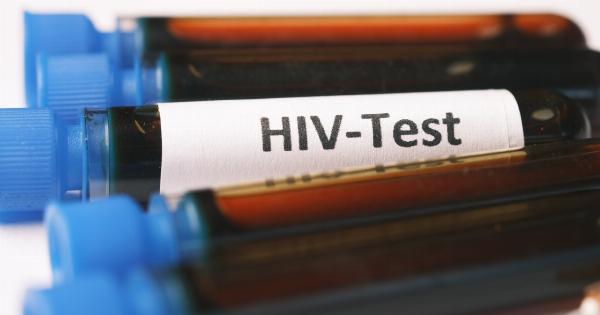The discovery of the Human Immunodeficiency Virus (HIV) and its subsequent link to Acquired Immunodeficiency Syndrome (AIDS) remains one of the most profound and impactful moments in medical history.
Since the identification of the virus in the early 1980s, extensive research has been conducted to understand its origins, transmission, treatment, and prevention. This article provides an update on the evolution of HIV-AIDS science and highlights key advancements in the field.
1. The Early Years: Identification and Understanding
In 1981, the Centers for Disease Control and Prevention (CDC) in the United States reported cases of a mysterious illness affecting primarily gay men.
This eventually led to the identification of AIDS and the realization that it was caused by a novel virus, which would later be named HIV.
Scientists embarked on a journey to understand the virus and its impact on the immune system. Research focused on deciphering the virus’s genetic makeup, route of transmission, and potential ways to detect and treat it.
2. Transmission and Prevention
HIV is primarily transmitted through sexual contact, sharing contaminated needles, and transmission from mother to child during pregnancy, childbirth, or breastfeeding.
Over the years, extensive research has been conducted to understand and prevent these modes of transmission.
Significant progress has been made in preventing the transmission of HIV.
The use of antiretroviral drugs as pre-exposure prophylaxis (PrEP) has proven highly effective in reducing the risk of acquiring HIV through sexual contact for individuals at high risk. Additionally, education and awareness campaigns have played a crucial role in promoting safe sex practices and emphasizing the importance of condom use.
3. Antiretroviral Therapy (ART)
Since the early years of the HIV epidemic, antiretroviral therapy (ART) has been a cornerstone in the management and treatment of the virus.
ART involves a combination of antiretroviral drugs that target different stages of the HIV lifecycle, reducing viral replication and preventing the progression of HIV to AIDS.
The development of ART has revolutionized the lives of people living with HIV. It has transformed HIV from a life-threatening disease to a manageable chronic condition, allowing individuals to lead healthy and productive lives.
Ongoing research is focused on developing new and more effective drugs, minimizing side effects, improving drug adherence, and exploring long-acting treatment options.
4. Testing and Diagnosis
Accurate and accessible diagnostic tests are crucial for early detection and treatment initiation. Over the years, HIV testing methods have evolved significantly.
The initial tests relied on detecting antibodies produced by the immune system in response to HIV infection. However, these tests had limitations, with a window period during which individuals could test negative despite being infected.
Advances in testing technologies, such as the introduction of fourth-generation tests that detect both antigens and antibodies, have reduced the window period and improved diagnostic accuracy.
5. The Role of Vaccines
Although no effective vaccine against HIV currently exists, research in this area has been a key focus.
Developing a safe and effective HIV vaccine has proven to be incredibly challenging due to the virus’s ability to mutate rapidly and evade the immune system. However, scientific advancements have provided valuable insights into the design and development of potential vaccines.
Several vaccine candidates have shown promising results in early-stage clinical trials, stimulating the immune system to produce antibodies or cellular responses against the virus.
Ongoing research aims to refine these vaccine candidates and ultimately develop an effective HIV vaccine that can be deployed on a global scale.
6. Access to Treatment and Global Efforts
Access to HIV treatment and care has improved significantly, but challenges remain, particularly in resource-limited settings.
International efforts have been crucial in expanding access to medications, reducing treatment costs, and ensuring long-term sustainability.
Organizations such as the Joint United Nations Programme on HIV/AIDS (UNAIDS), the World Health Organization (WHO), and various non-governmental organizations (NGOs) have played a pivotal role in coordinating global efforts, advocating for increased funding, and supporting prevention and treatment programs worldwide.
7. Stigma, Discrimination, and Psychosocial Support
HIV has long been associated with stigma and discrimination, leading to profound psychosocial impacts on individuals and communities affected by the virus.
Efforts to address and reduce HIV-related stigma have been integral to the evolution of HIV-AIDS science.
Community-based organizations, support groups, and counseling services have played a crucial role in providing psychosocial support to individuals living with HIV.
Ongoing initiatives aim to raise awareness, promote acceptance, and combat discrimination towards those affected by the virus.
8. Co-infections and Comorbidities
For many individuals living with HIV, co-infections and comorbidities pose additional health challenges. HIV weakens the immune system, making individuals more susceptible to opportunistic infections and certain cancers.
Research has focused on managing and treating these co-infections, such as tuberculosis, hepatitis B and C, and sexually transmitted infections.
Additionally, efforts have been made to address comorbidities associated with HIV, including cardiovascular disease, neurological conditions, and mental health disorders.
9. Towards an HIV-Free Generation
Achieving an HIV-free generation remains a global health goal. Combining various prevention strategies, including condom use, widespread access to testing and treatment, and comprehensive sex education, is crucial in curbing the spread of HIV.
Research continues to drive advancements in HIV-AIDS science, with a particular focus on developing effective prevention methods, accessible treatments, and ultimately finding a cure.
Collaborative efforts between scientists, healthcare providers, policymakers, and affected communities are essential in bringing an end to the HIV epidemic.
10. Conclusion
The evolution of HIV-AIDS science over the past few decades has been remarkable. From the identification of the virus to the development of life-saving medications and prevention strategies, immense progress has been made.
However, challenges persist, and a comprehensive and sustained effort is required to eliminate new HIV infections, prevent discrimination, and ensure accessible treatment and support for all those affected by the virus.


























